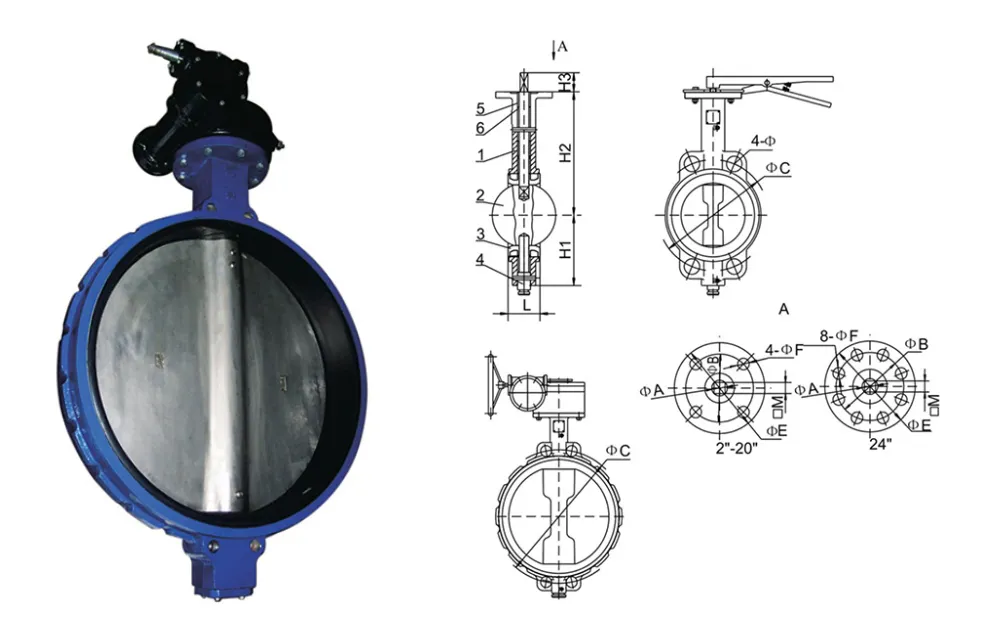12-р сар . 16, 2024 13:26 Back to list
swing check valve flange type
Understanding Swing Check Valve Flange Types A Comprehensive Overview
In the world of fluid mechanics and piping systems, swing check valves play a crucial role in controlling the flow of liquids and preventing backflow. Unlike other types of check valves, swing check valves operate with a hinged disc that swings on a pivot to allow fluid to flow in one direction while preventing reverse flow. The flange type of these valves is essential to consider, as it influences installation, maintenance, and overall performance in various applications.
What is a Swing Check Valve?
A swing check valve is typically used in piping systems for water, steam, oil, and gas applications. They are designed to automatically prevent backflow when the fluid in the pipeline stops or begins to reverse. The operating mechanism consists of a disc connected to a pivot point; when fluid flows in the designated direction, the disc opens, and as the flow decreases or reverses, the disc swings back and closes, creating a seal that stops any reverse flow.
Importance of Flange Types
Flanges are integral components that help in connecting valves to the pipeline, providing a tight seal to avoid leaks. The flange type of a swing check valve influences how it is mounted and the compatibility with existing piping systems. Common flange standards include ANSI (American National Standards Institute), ASME (American Society of Mechanical Engineers), and DIN (Deutsches Institut für Normung), among others. These standards dictate the dimensions, pressure ratings, and materials used in flange design, directly affecting valve performance and longevity.
Types of Flanges in Swing Check Valves
1. Raised Face Flange (RF) This is one of the most common flange types. The sealing surface is slightly raised above the joint, allowing for better sealing capability and accommodating a variety of gaskets. Raised face flanges are easy to install and ensure a reliable connection.
2. Flat Face Flange (FF) The entire surface of the flange is flat, making this type ideal for applications where the matching flange is also flat. Flat face flanges are often used in low-pressure systems, and they require careful alignment to prevent leaks.
3. Ring-Type Joint Flange (RTJ) This design features grooves that accommodate a softer metal gasket for a tight and leak-proof seal. RTJ flanges are commonly used in high-pressure applications where security against leakage is a priority.
swing check valve flange type

4. Blind Flange Although not used for installing swing check valves directly, blind flanges are useful in systems where the valve may need to be temporarily removed or closed off. They allow for maintenance and inspection without needing to replace piping.
Considerations When Selecting Flange Types
When selecting the appropriate flange type for a swing check valve, a few critical factors should be taken into account
- Material Compatibility Ensure that the flange material matches the piping material to prevent galvanic corrosion and ensure structural integrity. Common materials include stainless steel, carbon steel, and PVC.
- Pressure Rating The flange must be rated to handle the pressure of the system to prevent failure. Common ratings include 150, 300, and 600 psi, so understanding the operational requirements is vital.
- Size and Dimensions Confirm that the flange size matches the valve and pipe diameter to ensure a secure and leak-proof installation.
- Installation Environment Consider the environmental conditions, such as temperature and humidity, as they may affect flange material selection.
Conclusion
Swing check valves with flange types are essential components in various industries, including water treatment, oil and gas, and manufacturing. Choosing the right flange type, based on the specific application requirements, ensures efficient operation and longevity of the valve. As industries continue to evolve, understanding the nuances of these components will remain pivotal to maintaining effective fluid control systems. Whether upgrading existing systems or designing new installations, the flange type of a swing check valve should never be underestimated in its importance to overall performance and reliability.
Share
-
Reliable Wafer Type Butterfly Valves for Every IndustryNewsJul.25,2025
-
Reliable Flow Control Begins with the Right Ball Check ValveNewsJul.25,2025
-
Precision Flow Control Starts with Quality ValvesNewsJul.25,2025
-
Industrial Flow Control ReliabilityNewsJul.25,2025
-
Engineered for Efficiency Gate Valves That Power Industrial PerformanceNewsJul.25,2025
-
Empowering Infrastructure Through Quality ManufacturingNewsJul.25,2025